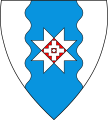|
Muhu
Muhu (also called Muhumaa in Estonian) is an island in the West Estonian archipelago of the Baltic Sea. With an area of 198 km2 (76 sq mi), it is the third largest island belonging to Estonia, after Saaremaa and Hiiumaa. Together with neighbouring smaller islands of Kesselaid, Viirelaid, Võilaid and Suurlaid, it forms Muhu Parish (Estonian: Muhu vald), the rural municipality within Saare County. The municipality has a population of 1,968 (as of 2010) and covers an area of 206.12 km2 (80 sq mi). The population density is 8.8/km2 (23/sq mi). History and geographyThe German names for the island are Mohn and Moon. Moon is also the Swedish name for the island. The most important villages in Muhu are Kuivastu, Liiva (where the school can be found) and Koguva. In Pädaste, an internationally renowned luxury hotel and spa operates in the restored manor house. The island is divided from mainland Estonia by the Suur Strait (Moonsund) and from Saaremaa by the Väike Strait. It is linked by ferry to Virtsu on the mainland, and to Saaremaa by a causeway, the Väinatamm. In winter an ice road connects the island to the mainland. In January 1227, an army of the Livonian Brothers of the Sword with Letts, Germans of Riga and native Livonians (20,000 men commanded by William of Modena) crossed on sea ice from the mainland and attacked the island of Saaremaa to reduce the last holdout of pagan Estonians. The Estonians surrendered on Muhu at a circular stronghold called Mona, the earthworks of which are still preserved near the causeway between the islands. This ended the Estonian Crusade. The Battle of Karuse or Battle on the Ice was fought on 16 February 1270 between the Grand Duchy of Lithuania and the Livonian Order on the frozen Baltic Sea between Muhu and the mainland. The Lithuanians achieved a decisive victory. The battle, named after the village of Karuse, was the fifth-largest defeat of the Livonian or Teutonic Orders in the 13th century.[1] The same waters saw the Battle of Moon Sound in September–October 1917 between Russian and German naval forces. Muhu is the home of Estonia's first wine tourism farm – Luscher & Matiesen Muhu Winehouse. CultureMuhu is known for having the only traditional windmills in Estonia that are still operational. Muhu is also known for its traditional knitted stockings.[2][3] Gallery
See alsoReferences
External linksWikivoyage has a travel guide for Muhu.
|
||||||||||||||||||||||||||||














